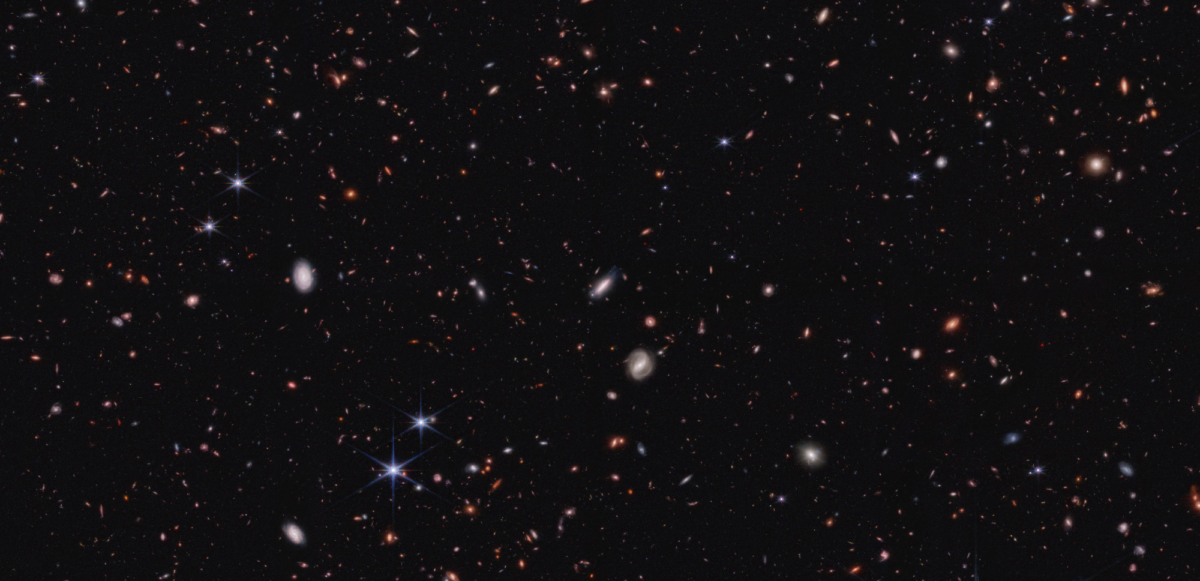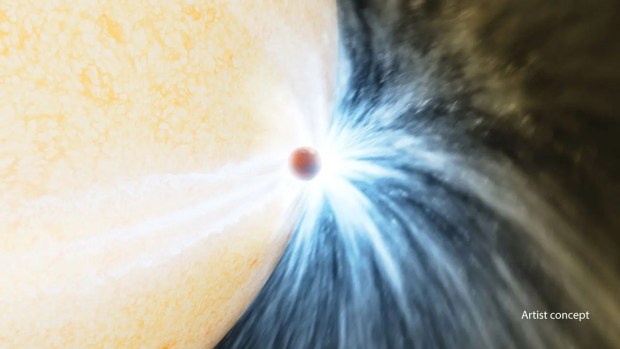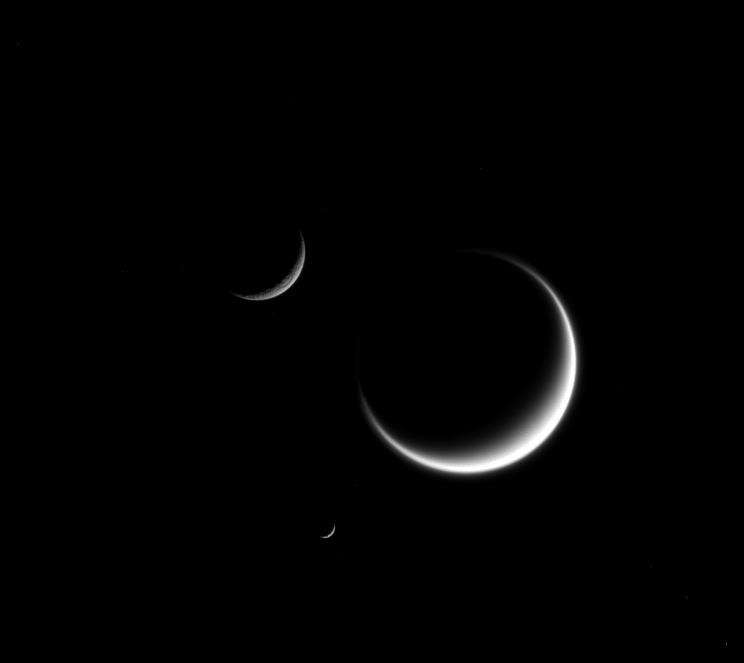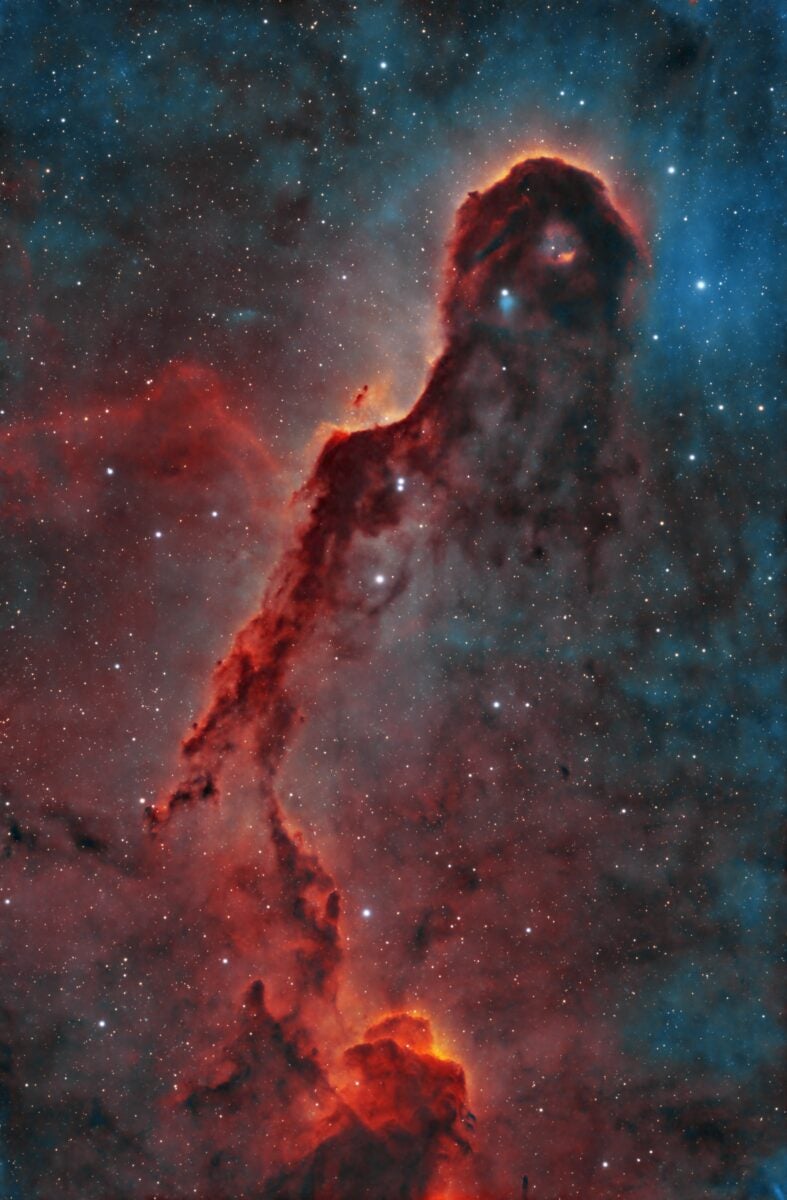JWST discovers that accreting black holes may be to blame for reports that hinted early galaxies were too big for their britches.
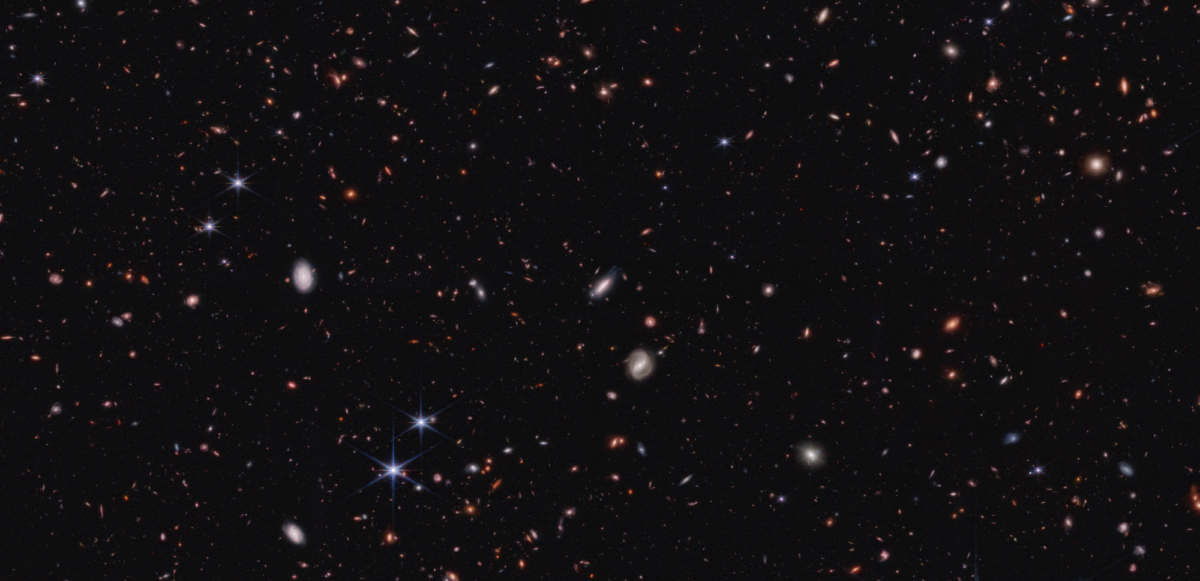
JWST’s Near-Infrared Camera captured this galaxy-filled field as part of the Cosmic Evolution Early Release Science Survey. Some of the most distant galaxies, which formed within 1 billion years of the Big Bang, appear brighter than they otherwise would because they contain accreting supermassive black holes. Credit: NASA, ESA, CSA, Steve Finkelstein (UT Austin)
The cosmos may not be broken after all. Soon after the James Webb Space Telescope (JWST) started its science mission in 2022, astronomers discovered a half-dozen galaxies near the edge of the universe that appeared far more massive than anyone expected (see “Too big, too soon” in the September 2023 Astronomy).
Prevailing theory held that the first galaxies were relatively small clouds of gas, stars, and dust that slowly grew into the majestic spirals and unassuming ellipticals that populate the universe today. But based on the amount of light these six galaxies were spewing into space, researchers estimated that each possessed at least 10 billion solar masses of material and one seemed to be 10 times more massive, or nearly the size of the Milky Way.
The observations implied that these galaxies — all from a time less than 1 billion years after the Big Bang — were converting nearly 100 percent of their gas into stars. Cosmologists couldn’t figure out how this was possible — at least within the standard model of cosmology known as Lambda Cold Dark Matter. But the researchers, led by Ivo Labbé of the Swinburne University of Technology in Melbourne, Australia, stressed that their results were preliminary, and that future, more detailed observations were needed to rule out other possibilities.
A new study brings one of those alternatives front and center. It finds that some early galaxies hold far less mass than they appeared to initially. In these objects, not all of the light comes from stars. Instead, a significant portion radiates from an accretion disk surrounding a centrally located supermassive black hole.
A supermassive black hole can boost a galaxy’s light output by 10 times or more. The black hole’s intense gravity pulls in surrounding stars and gas clouds, shredding them in the process. As the material spirals toward the beast’s event horizon — the point of no return where not even light can escape — it forms an accretion disk. The gas in the disk moves at speeds approaching that of light, and friction heats it to millions of degrees. Copious amounts of light radiate from the disk and cause its host galaxy to appear far more massive than it really is. The same phenomenon powers quasars and other active galaxies that we see closer to home.
Katherine Chworowsky, a graduate student at the University of Texas at Austin, led a team that analyzed 118 massive galaxies — those weighing more than 10 billion solar masses — in the distant cosmos. The galaxies reside in 10 areas JWST imaged within a small region known as the Extended Groth Strip, which lies near the border between Ursa Major and Boötes. “We are still seeing more galaxies that predicted [at these early times],” said Chworowsky in a press release, “although none of them are so massive that they ‘break’ the universe.” They report their results in the September issue of The Astronomical Journal.
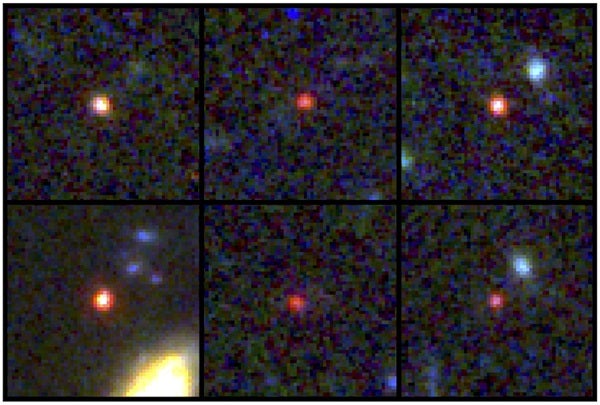
These supermassive black holes appear small and reddish on JWST images, and scientists have taken to calling them “little red dots.” Spectra of the objects reveal fast-moving hydrogen gas, a signature of accretion disks. When the team removed these objects from their analysis, the early galaxies that remained fell within theoretical predictions. “So, the bottom line is there is no crisis in terms of the standard model of cosmology,” said co-author Steven Finkelstein of the University of Texas at Austin.
The new results seem to have solved the biggest puzzle posed by the initial observations — that early galaxies appeared to be too massive — but cosmologists aren’t out of the woods yet. Chworowsky’s team also discovered roughly twice as many massive galaxies in their sample than the standard model predicts. Chworowsky suggests that galaxies in the early universe may have been more efficient at turning gas into stars than those that exist today.
Related: JWST turns up even more heavier-than-expected black holes
The idea isn’t as strange as it may at first seem. Stars form in gas clouds that grow cold enough for gravity to overcome their internal gas pressure. In the nearby universe, this process proceeds at a snail’s pace — the Milky Way creates only a few new stars every year. But the higher densities and the low abundance of elements heavier than helium at early cosmic times could well increase this rate significantly.
None of these discoveries would be possible without JWST. Although the galaxies emit mostly ultraviolet and visible light, the expansion of the universe shifts this radiation into the near-infrared part of the electromagnetic spectrum. Hubble sees ultraviolet, visible, and a bit of the near-infrared, but it simply can’t detect the most distant objects because their light has redshifted out of its wavelength domain. And the smaller infrared-sensitive Spitzer Space Telescope, which ceased operations in 2020, didn’t have the resolution to separate many of the closely spaced galaxies at these distances. Thankfully, JWST has the sensitivity, resolution, and wavelength coverage to reveal these galaxies’ details.
